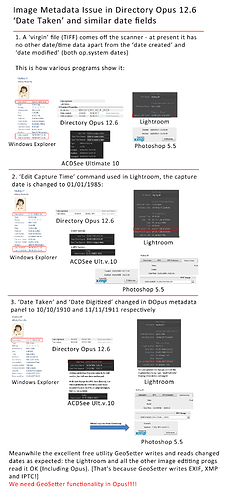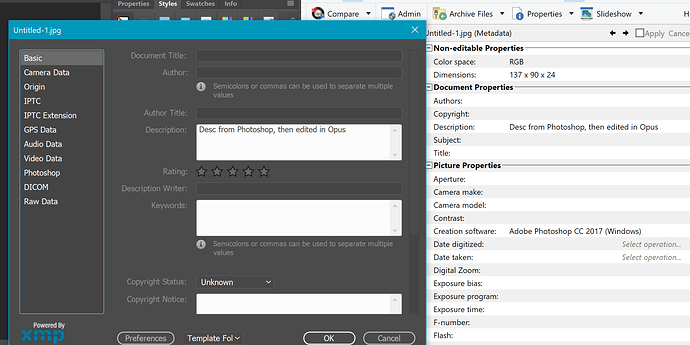I have just been batch processing of holiday photos from 2 cameras which had different time bases. I use Adobe Lightroom for most photo processing but prefer to bring timestamps into line before importing into Lightroom so that other photo viewing/editing applications still show correct local time. All 800 odd photos from my wife's camera needed to be adjusted by approx. 8 hours because of time zone changes that had not been applied to her camera.
I used Dopus 11.19 to make the changes in the metadata pane for all files in the first photo directory. The four date/time values (Date created:, Date modified:, Date digitized: and Date taken) were all adjusted to the same (corrected) value. However on importing into Lightroom the old uncorrected date/time showed up. How could this be?
I have another application "EXIF Date Changer Pro" which simply adjusts all EXIF time values in all photos in a single directory by a set amount which I then tested. Its date/time changes were reflected in Lightroom so I assumed there must be other metadata that Dopus is not touching.
I then used ExifTool 10.33 to examine all the metadata held within a Canon HS230 Jpeg. In the IFD0 section, which covers basic camera information, is a field "ModifyDate". On changing this value in the metadata Lightroom now gives the correct time and photos can be logically sorted.
Given that Lightroom is probably the pre-eminent photo handling application for serious photographers, I think the pre-eminent file handling application Dopus should be able to inspect and edit important metadata fields. How about adding this important field to the metadata roster?

